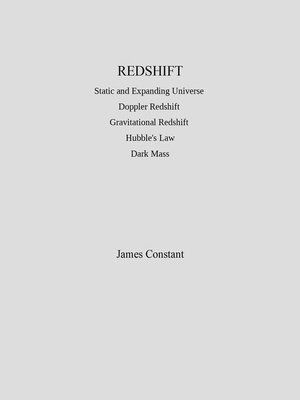
Sign up to save your library
With an OverDrive account, you can save your favorite libraries for at-a-glance information about availability. Find out more about OverDrive accounts.
Find this title in Libby, the library reading app by OverDrive.



Search for a digital library with this title
Title found at these libraries:
| Library Name | Distance |
|---|---|
| Loading... |
When light spectra from distant sources are examined, they are found to be shifted toward the red end of the spectrum. What explains the redshift observations? There are two main theories, the Doppler and Gravitational theories, that seek to explain why observed redshifts occur, as discovered and illustrated in a graph called Hubble's Law. Doppler theory claims redshift may occur if the source recedes at speed v. Thus, if galaxies recede the universe expands. Gravitational theory claims that redshift definitely occurs if the source is stationary in a gravitational field. Thus, if galaxies are stationary the universe is stationary. In Doppler theory there is no physical force that requires v increase with observed redshift increase. In Gravitational theory there is a physical force which requires distance to increase with observed redshift increase and, additionally, finds that the observable average mass density in the universe is substantially less than the average cosmic mass density inferred by Hubble's law. The scientific community identifying the observed redshifts solely as velocity shifts is clearly biased in favor of the universe expanding theories propounded by general relativity and the Big Bang theory.







